Brews’d and battered: Akron-area breweries face changing consumer tastes, other challenges
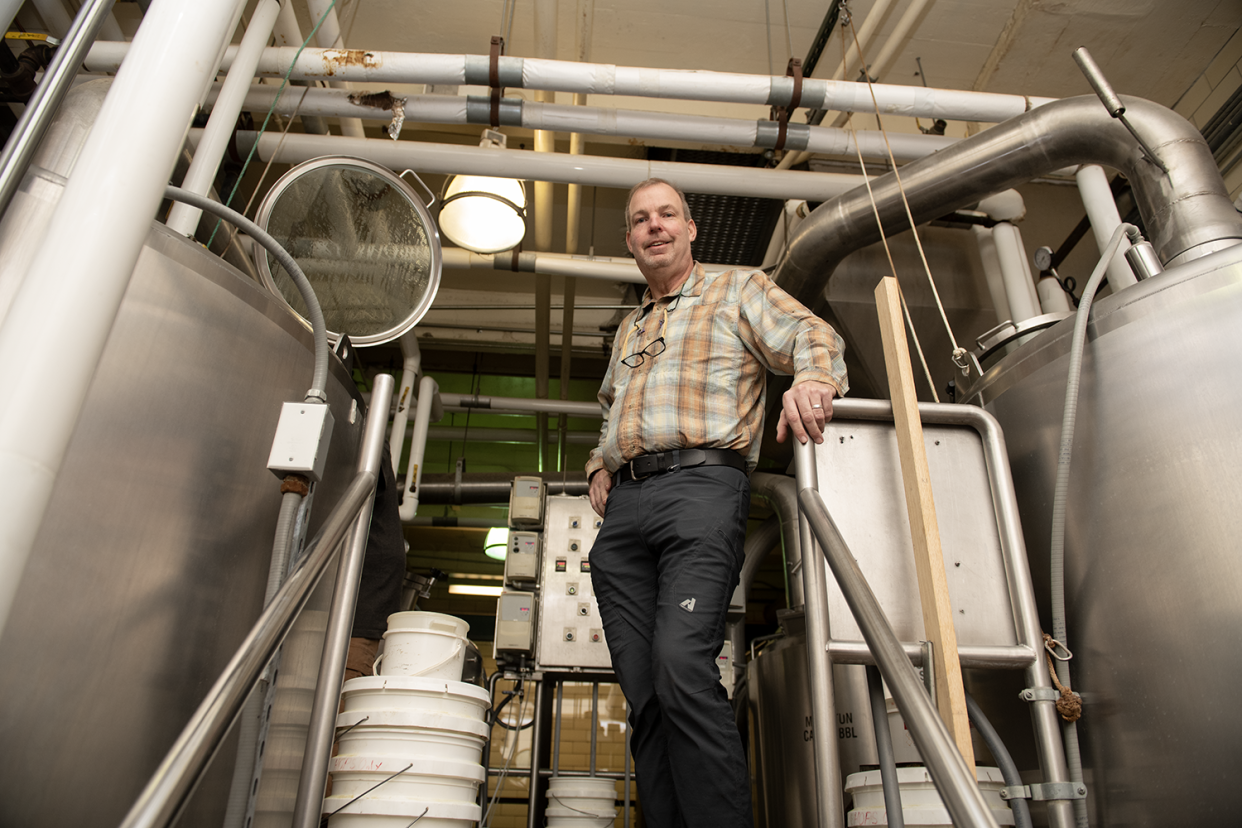
From a craft brewery housed along the Towpath Trail in Akron to one in a 166-year-old church in Kent, local suds makers strive to give their customers new flavors and a place to comfortably gather.
But lately, area brewers and business owners have been facing headwinds in the industry. An increased cost of goods and labor, difficulties expanding into distribution, changing customer tastes — including sometimes no taste for beer or any alcohol at all — and other factors are challenging many and forcing some out of the industry entirely.
That’s been the case with the recently acquired Lock 15 Brewing Company by the Towpath, said co-founder and head brewer Joe Karpinski, as well as for Akron’s recently closed R. Shea Brewing.
Rising interest rates have meant higher payments for borrowers, like R. Shea Owner Ron Shea and Karpinski, of variable-rate loans, such as Small Business Administration (SBA)-backed loans.
During the COVID-19 pandemic, Shea, who is a father, said he noticed young people becoming more isolated and spending a lot more time on social media. In his view, he said that hasn’t necessarily changed since stay-at-home orders ended years ago.
“I think we’re losing that new demographic,” said Shea, who opened his Merriman Valley location in 2015 and expanded to add a site at downtown Akron's Canal Place in 2019. “And now that there's the ready-to-drink cocktails on the shelves, beer is getting bypassed altogether.”
Now, breweries are trying to adjust to the changes while staying afloat.
"The new normal is flat to down," said John Najeway, co-owner of Thirsty Dog Brewing Company in Akron. "So, it's adjusting our business models back to those numbers to stay healthy and survive."
How many breweries are in Ohio?
Competition is part of the challenge for craft breweries not just in the state but also nationwide.
The number of craft breweries in Ohio hit a record high in 2023 with 434, according to the nonprofit Ohio Craft Brewers Association (OCBA). The association’s figure as of March 11 was 428 breweries, said OCBA Deputy Director Justin Hemminger.
“We’ve had seven closures since the beginning of the year and five openings,” Hemminger said.
Every two years, OCBA surveys its members on barrels of beer produced. Those figures went from 1.4 million barrels in 2018 to 1.2 million in 2020 to 1.3 million in 2022.
“Every industry experiences accelerated growth and then kind of peaks out, and then you've got a consolidation phase.”
Bryan Weber, president, The Brew Kettle
In 2022, the Brewers Association, a national nonprofit, ranked Ohio among states as:
Eighth in its number of breweries but 22nd in number of breweries per capita.
Sixth in the economic impact of its craft breweries but 18th in economic impact of those breweries per capita.
Sixth in craft beer barrels produced per year but 12th in gallons per adult 21 years or older.
The association does not track beer sales. “But nationwide, just from what we're hearing anecdotally from our brewers, the demand for craft beer in Ohio is roughly equivalent to what it is nationwide, which is to say that it's kind of leveled off a bit in the last couple years,” Hemminger said.
The Brew Kettle, founded in 1995, still operates its original Strongsville brewpub (read: brewery-restaurant) and runs its production out of Middleburg Heights. Bryan Weber, company president, equated the craft beer industry’s position to that of the tech bubble a quarter century ago.
Short of illustrating a bursting beer bubble, Weber said, “Every industry experiences accelerated growth and then kind of peaks out, and then you've got a consolidation phase.”
As part of that consolidation, The Brew Kettle recently acquired Lock 15 and purchased another Northeast Ohio brewery, the Canton Brewing Company.
Northeast Ohio beer industry news: The Brew Kettle buys Canton Brewing Co.
Karpinski, who co-founded Lock 15 in 2018, said increasing costs played a major role in the decision to become acquired by The Brew Kettle.
“The contracts we have for food, the buying power we have for our beer ingredients, are all basically at the smallest margins, the lowest end of the scale,” Karpinski said.
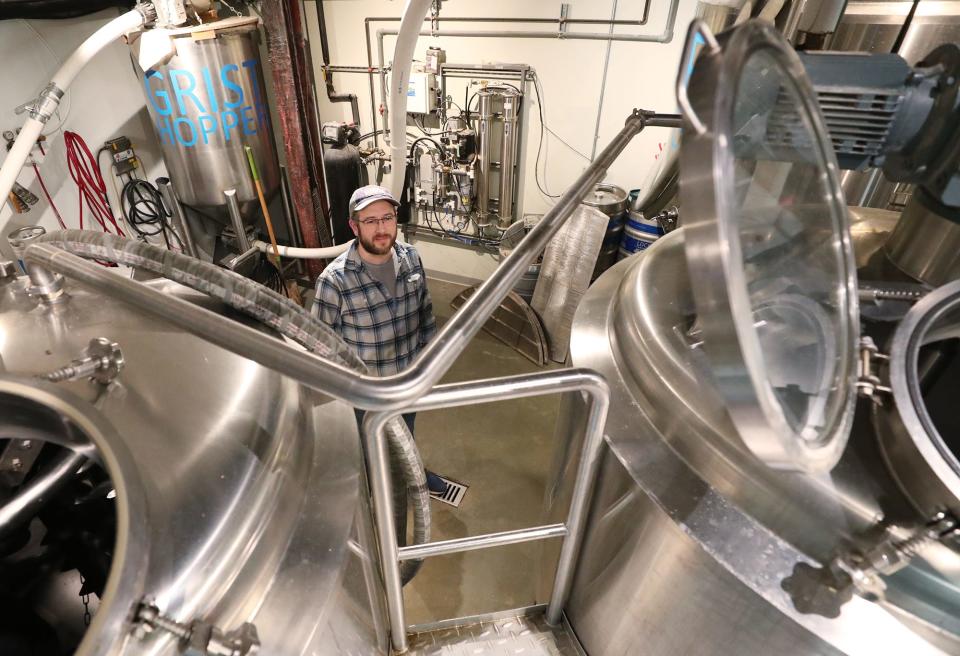
What is rising in price for craft breweries?
Aside from loan interest, other costs are adding up for local craft breweries, even after many supply chain kinks have been worked out.
Labor costs are increasing, said Shea and Karpinski.
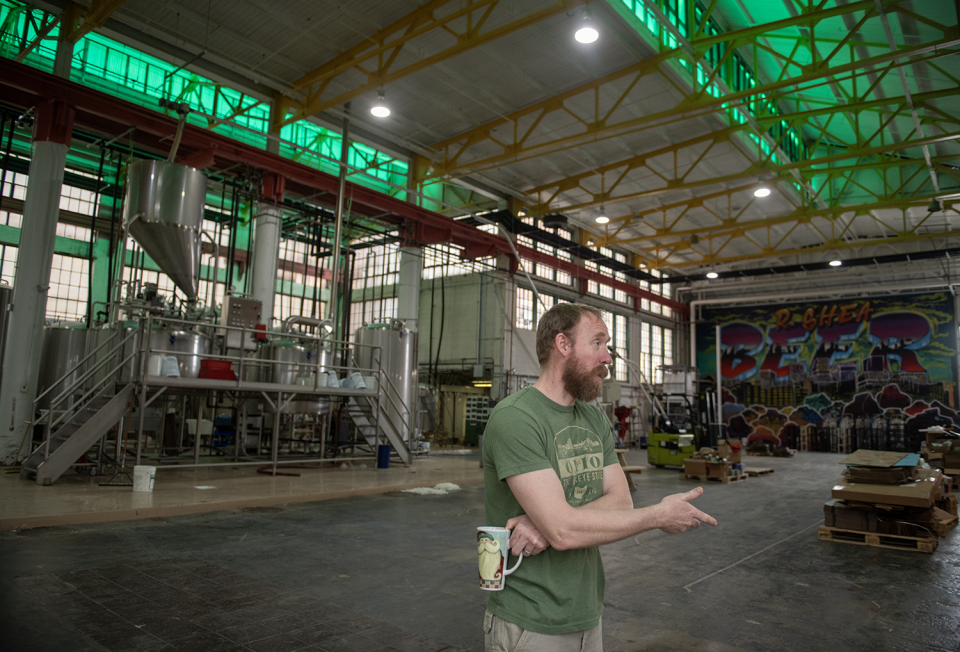
And ingredient costs are adding up, Karpinski added.
Jennifer Hermann, co-founder and head brewer at Bell Tower Brewing Company, located in a former church building first constructed in 1858 in Kent, also mentioned ingredient costs broadly and cited hops as an example. (Hermann told the Beacon Journal that all her comments for this story are her own and do not necessarily reflect Bell Tower’s position.)
Weber talked about increasing costs for multiple ingredients, including hops, kegs, CO₂, malt and grain.
Costs are also rising for lumber, said Hermann and Tom Robbins, co-owner and head brewer at Brighten Brewing Company in Copley.
And food overall is becoming more expensive, said Weber, Hermann and Shea.
Breweries have had to pass costs on to consumers, Hemminger said.
“If your input costs and your labor costs go up, you pretty much have no choice but to raise prices to consumers, which a lot of our breweries held out on doing for as long as they possibly could,” he said.
He pointed out that economic theory suggests when the price of an item goes up, people buy less of it.
Why can craft beer distribution be difficult?
Hermann opened Bell Tower with her business partners in late 2021. The brewery self-distributes locally, including consistently to The Kent Stage and the Kent State University Hotel & Conference Center. But she said venturing into wider distribution can be difficult and is not currently in her plans.
“If beer is sitting on a shelf without a salesperson, beer is sitting on a shelf next to the beer that everybody’s drinking — to have to compete with that takes a marketing strategy that we are not prepared to put together,” Hermann said.
Other costs include delivery vehicles, drivers, incorporation of new safety measures and equipment like canning machines, she said.
“To start a brewery these days, I think you'd want to have one that wouldn't distribute. You would just have a brewpub. I think that’s the future of craft beer for most people because the distribution networks now are full.”
Fred Karm, founder, Hoppin' Frog
Fred Karm, owner and brewmaster of Akron's Hoppin' Frog, has succeeded in selling to roughly 20 states, multiple countries in Europe and recently expanding distribution to Canada.
But that doesn’t mean that’s the way forward for newer businesses.
“To start a brewery these days, I think you'd want to have one that wouldn't distribute,” Karm said. “You would just have a brewpub. I think that’s the future of craft beer for most people because the distribution networks now are full.”
One issue is that when craft brewers work with distributors rather than self-distributing, Ohio’s franchise law locks the brewers into lifetime contracts with distributors that the brewers can’t get out of even when they have issues with those deals, Hemminger said.
Through an initiative called the Brewers Freedom Alliance, OCBA is working to change the law via Senate Bill 138 and House Bill 306 so that breweries that brew 250,000 barrels of beer per year or fewer are governed by contract law rather than franchise law, Hemminger said.
As it currently stands, Hemminger said: “There is no way out for a small brewer when their distributor decides that they don't care about them anymore.”
How are consumer alcohol tastes changing?
Americans in the 18-to-34 age range are also becoming “progressively less likely to use alcohol over the past two decades,” according to a Gallup report from August 2023. (The legal drinking age is still 21 years old.)
"Let's talk about marijuana," Hermann said in a conversation about changing tastes.
"I do think that the availability of it and the dawn of Ohio becoming a recreational state is really going to shake up the drinking world a little bit,” she said.
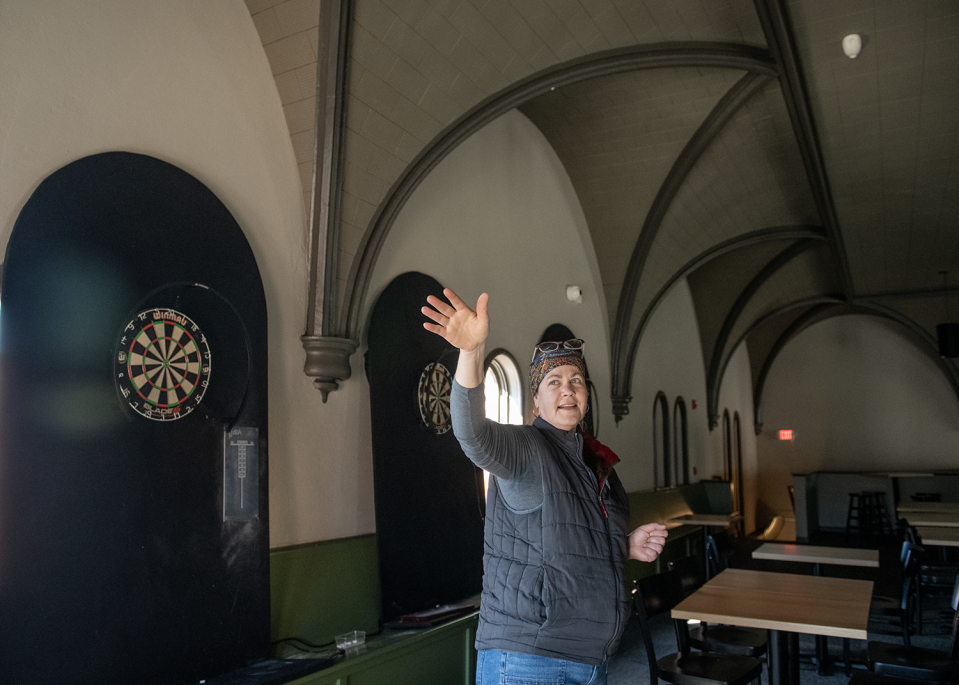
On that topic, Hemminger said: “We fully expect there to be a segment of the population who may have been craft beer drinkers who are going to devote some of their discretionary income to cannabis, and maybe at the expense of beer. We don't really know if that kind of change is something that will be lasting or if it’s something that's temporary.”
Among drinkers, many are opting for seltzers and cocktails, according to a January report from The New York Times and the Beacon Journal's reporting.
At Brighten, a permanent fixture on one of the taps is a seltzer brewed in-house called Bright Water. The brewery purchases different syrup flavors that it then adds to the seltzer, which Robbins said was an idea borrowed from a sour German beer style called Berliner Weisse.
Brighten, which opened in early 2021, also sells non-alcoholic drinks, cocktails and boxed wines alongside its beer and seltzer.
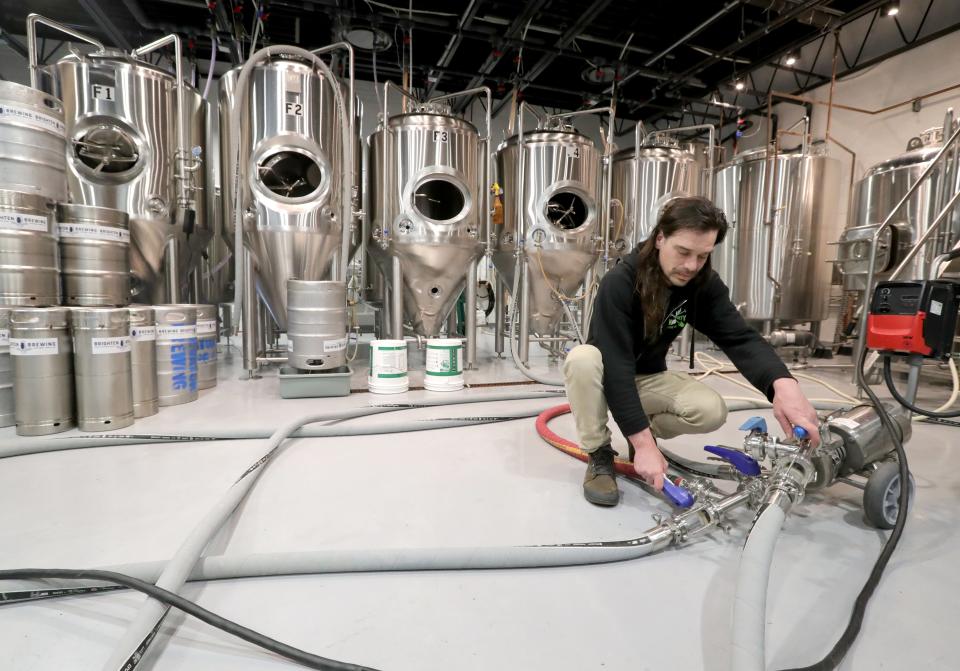
Lock 15 also brews seltzer.
"Even just breaking out all the individual brands of beer we have, all the different styles, that's still on the lower end of any of the given styles," Karpinski said. "We have it there as a gluten-free option, as an option for people who don't like beer. It's easy to make. It's not too expensive by any means."
Bell Tower offers a variety of cocktails, including signature options. Some of them, like Hot Buttered Rum and Glögg, a mulled wine-based drink, are served warm. “There is something for everybody,” Hermann said.
Najeway, on the other hand, said the business is sticking to its roots that date back to its 1997 founding, when it began brewing what he calls “traditional-style” beers. Examples include “American and European-style ales and lagers and Belgian beers,” he said.
One of Thirsty Dog’s original beers still in production is Old Leghumper, a robust porter, Najeway said.
But the longstanding fido-themed brewer's TapHouse also makes non-alcoholic root beer and ginger ale, he said.
What else is selling strong for area craft brewers?
At Hoppin' Frog, tucked in an industrial area on U.S. Route 224 across from the Akron Airdock, Karm spins records such as DEVO and Yngwie J. Malmsteen.
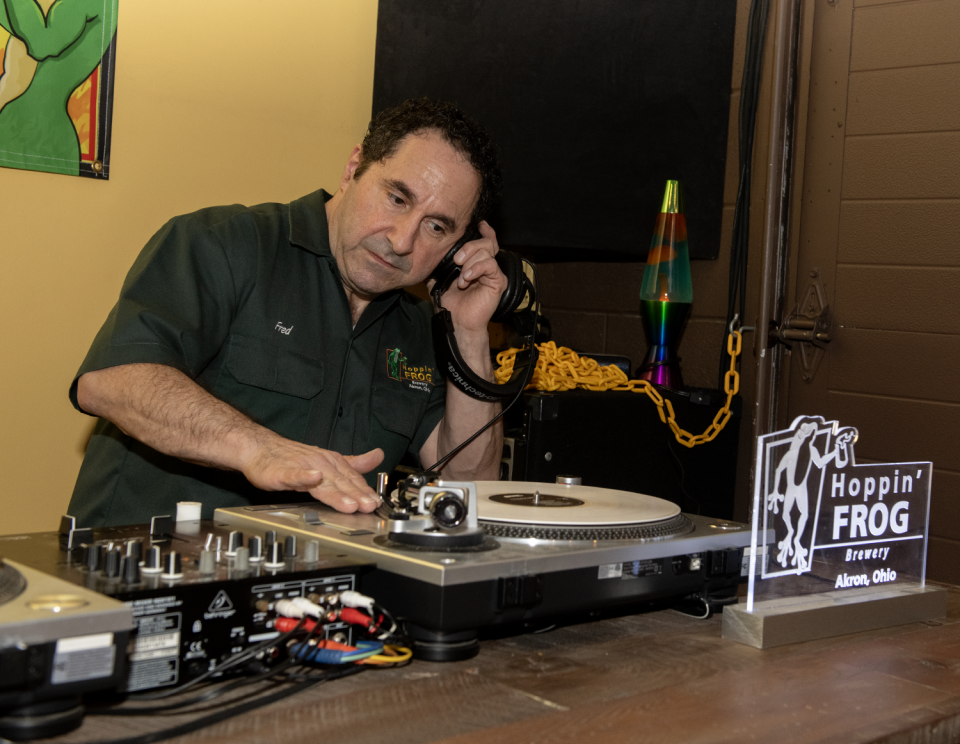
The brewery has 24 beers on tap and a food menu with seasonal items.
“Our shandies are our biggest seller,” Karm said of the beer. “We have over 15 different types.”
Those shandy fruit flavors include grapefruit, citrus and watermelon.
To be a successful brewer, Karm said it’s not as easy as just throwing in ingredients and seeing what works.
“As you get more and more flavors in there, it gets more and more complicated,” Karm said. “So, things like our Peanut Butter Hazelnut Caramel Chocolate Cake Stout — that gets a lot of attention, especially from brewers. They're like, ‘Man, how’d you do that?’”
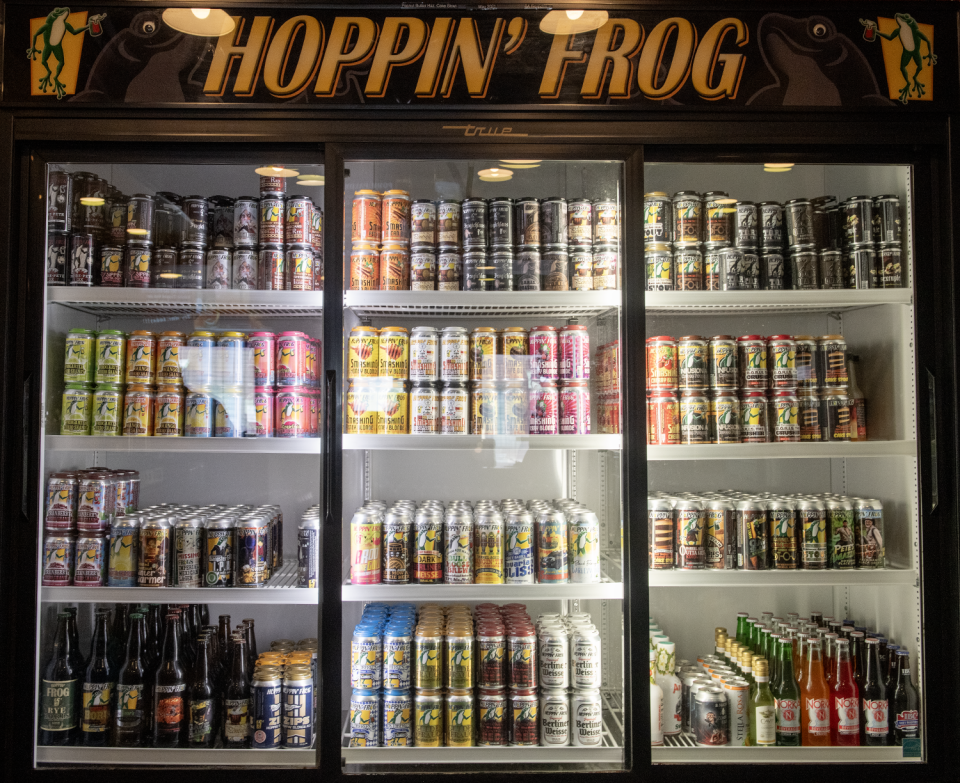
Many breweries have seasonal offerings.
“We've got a couple shandies that come out in the summer, the Oktoberfests and the Christmas ales that all come out at certain different points throughout the year,” Karpinski said.
Attached to its production brewery on Grant Street in Akron, Thirsty Dog’s Sour Haus is open on weekends. There, the brewery serves sour beers that age in wooden casks for years.
Najeway said sour sales have been steady lately, adding: “It’s still a very niche market.”
How are breweries differentiating aside from serving drinks?
In the craft beer space, serving food is largely considered a must or at least something to consider, according to the Beacon Journal’s sources.
“If you have great beer, you've got to have great food,” Weber said. “You can't have average food and great beer. You can't have average beer and average food. The consumer is going to be discerning.”
Hoppin’ Frog hosts guided beer tastings.
Brighten has arcade games, trivia, cards and other games; hosts a market (called a “Brewtique”); and displays and sells local art.

Numerous area breweries offer private events.
Thirsty Dog puts together themed beer dinners.
Bell Tower, in addition to running a scratch kitchen and curating beer dinners, hosts its dart league, a cornhole league, live music and trivia, and has held other events like seed-starting and cookie-decorating classes in the church.
The ambiance of oak wood doors, vaulted ceilings and the bell tower, chiming on the hour, also draw people in.
“The original intent of this building was so powerful,” Hermann said. “And to be able to repurpose that into a more secular place of gathering I think is really cool.”
Hemminger also talked about the community aspect of people drinking beer together. He highlighted the popularity of OCBA’s Winter Warmer Fest in Cleveland, which has been sold out every year since 2018, and its Six One Pour event in Columbus, recently voted by USA Today readers as the No. 3 beer city in America.
“Beer’s a beverage that’s been bringing people together to enjoy the company of others for thousands of years,” Hemminger said. “We’re not going to try to reinvent the wheel on that. Let’s get people together and give them some beer and let them have fun."
Despite all the issues facing the market, Hermann said it's not all bleak.
"I still am very excited, and I'm very impassioned about my craft," she said.
And for those wondering why they should care about craft beer, Najeway put it simply: “We're small businesses. We're not the big boys. And we support our communities, so help support us.”
Tawney Beans contributed to this report.
This article originally appeared on Akron Beacon Journal: Akron-area breweries determined to survive in spite of challenges

